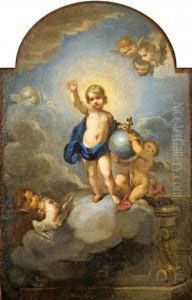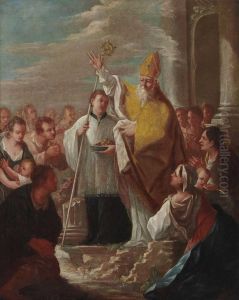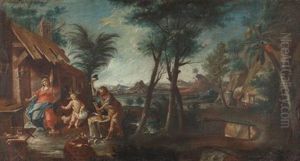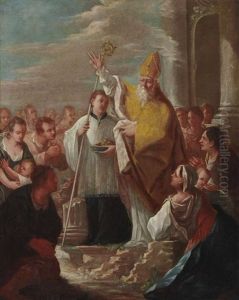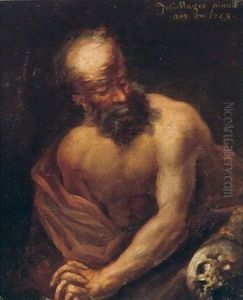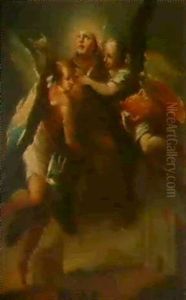Joseph Mages Paintings
Joseph Mages was a German painter and fresco artist, born in 1728 in the town of Marktoberdorf in Bavaria. He came from an artistic family, with his father, Johann Georg Mages, being a painter and his brother, Franz Anton Mages, also pursuing a career in art. Joseph Mages displayed an early talent for painting and was encouraged to develop his skills.
Mages initially trained under his father and then furthered his education in the arts by studying with prominent painters of his time. His work was greatly influenced by the Rococo style, which was prevalent in Southern Germany during the 18th century. Rococo art was characterized by elaborate ornamentation, asymmetrical designs, and a light-hearted and whimsical theme. Mages mastered this style and became known for his religious scenes and frescoes, which were often filled with a sense of movement and drama.
In the 1750s, Mages' career began to flourish. He was commissioned to create works for various churches and abbeys in Southern Germany. One of his most notable works is the ceiling frescoes in the church of St. Mang in Füssen, which showcase his talent in creating dynamic compositions that interact with the architecture of the space. His frescoes are celebrated for their vivid colors and the skillful integration of figures into complex scenes.
Mages' work was part of the movement that brought the Rococo style to religious art in Southern Germany, and he was highly regarded in his time for his contribution to the decoration of religious edifices. Despite his success, his life was cut short when he died in 1769, at the age of 41. His premature death meant that his oeuvre was not as extensive as some of his contemporaries, but his existing works continue to be appreciated for their artistic value and for the insight they provide into the Rococo period in German art.
Although not as widely known today as some other artists from his era, Joseph Mages' work is still of interest to art historians and enthusiasts of 18th-century art. His paintings and frescoes remain a testament to the vibrancy and creativity of the Rococo style in the context of Bavarian ecclesiastical art.
